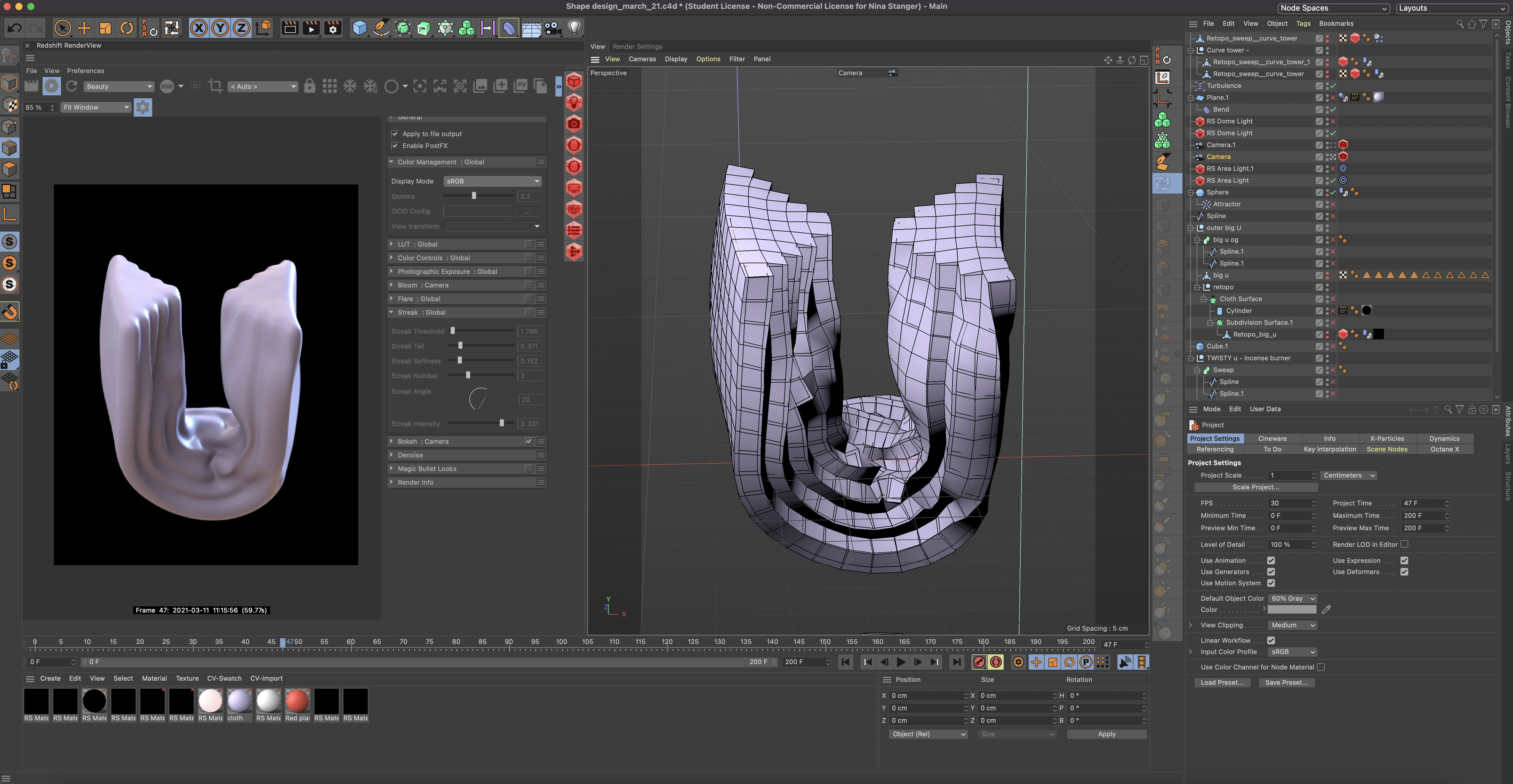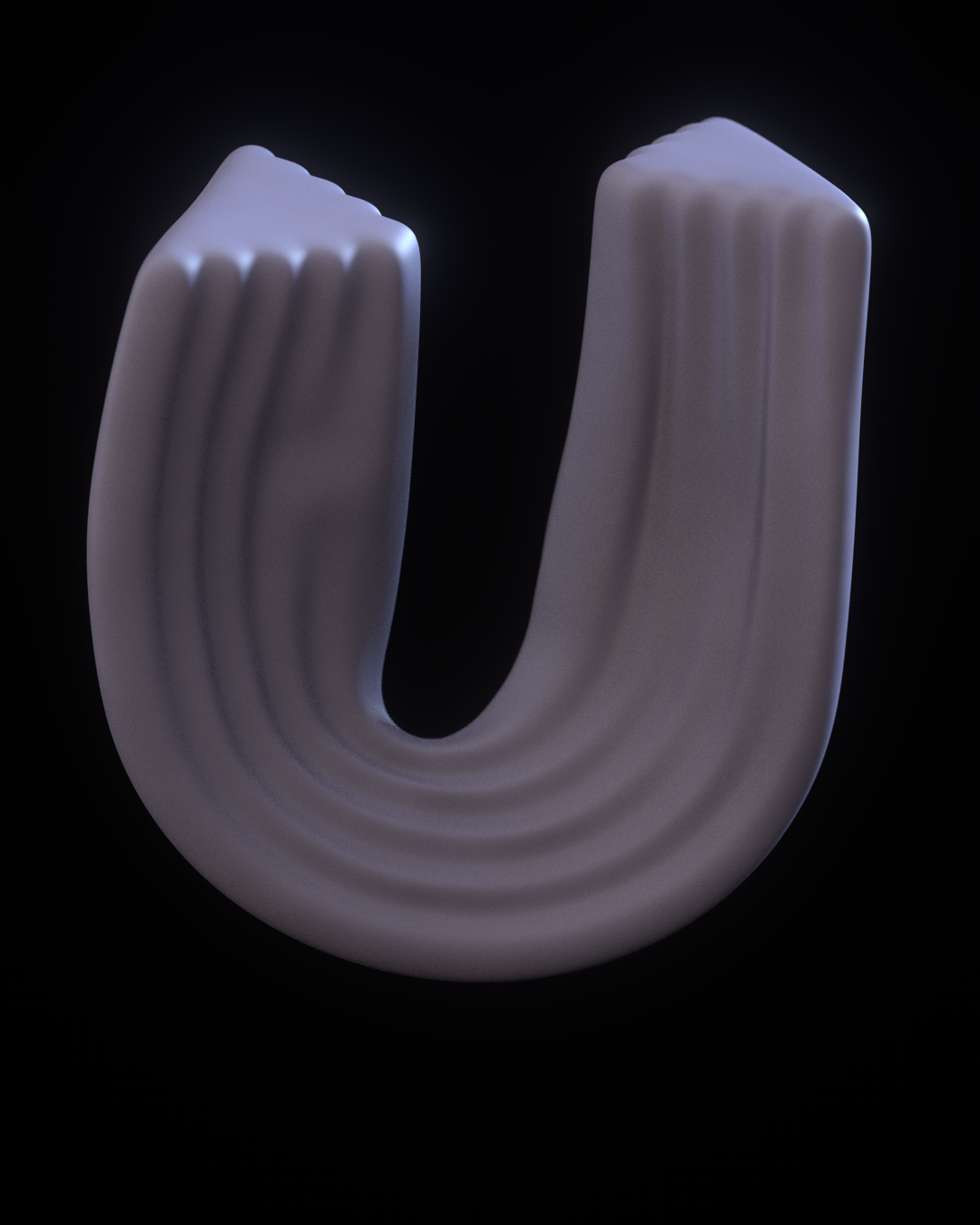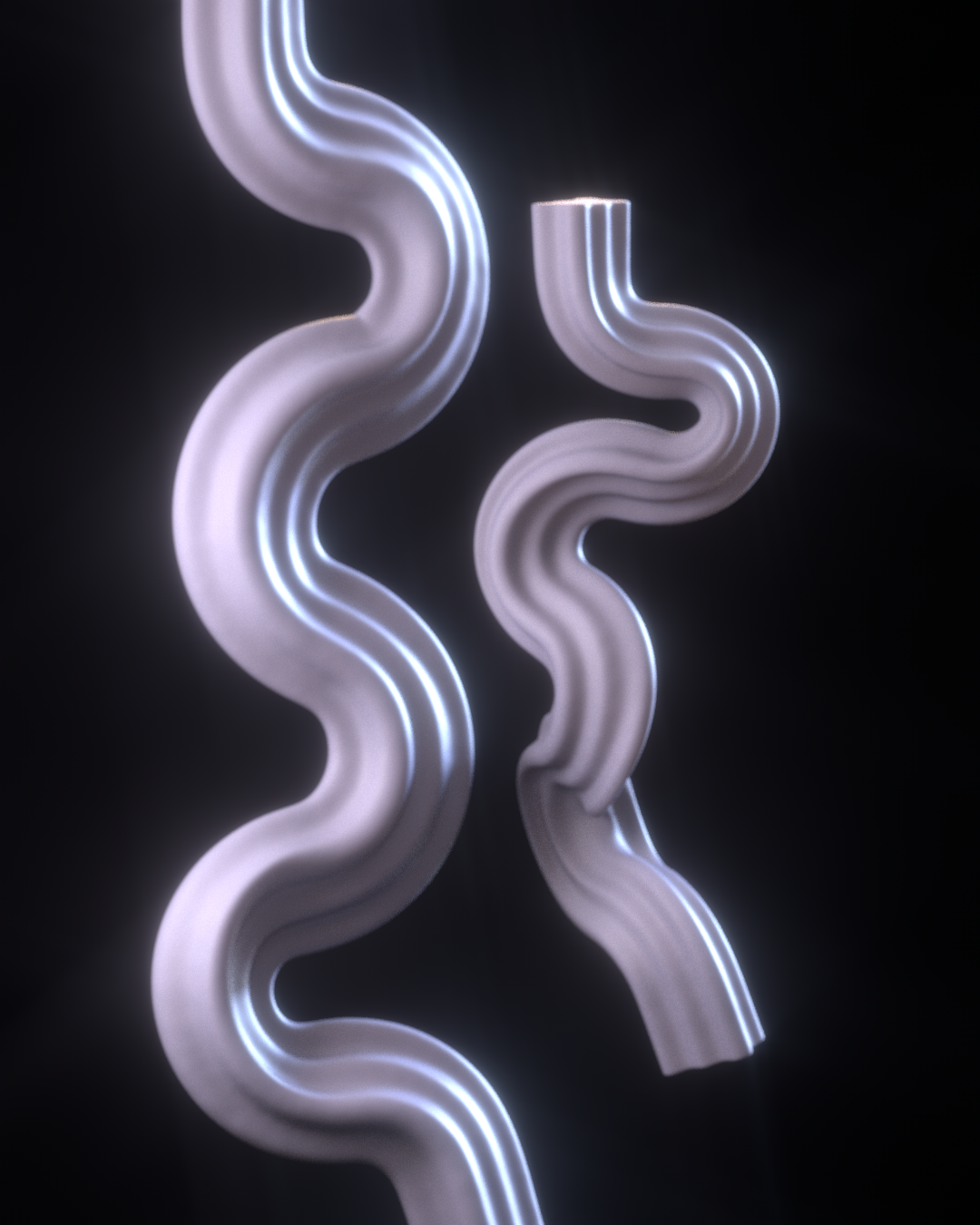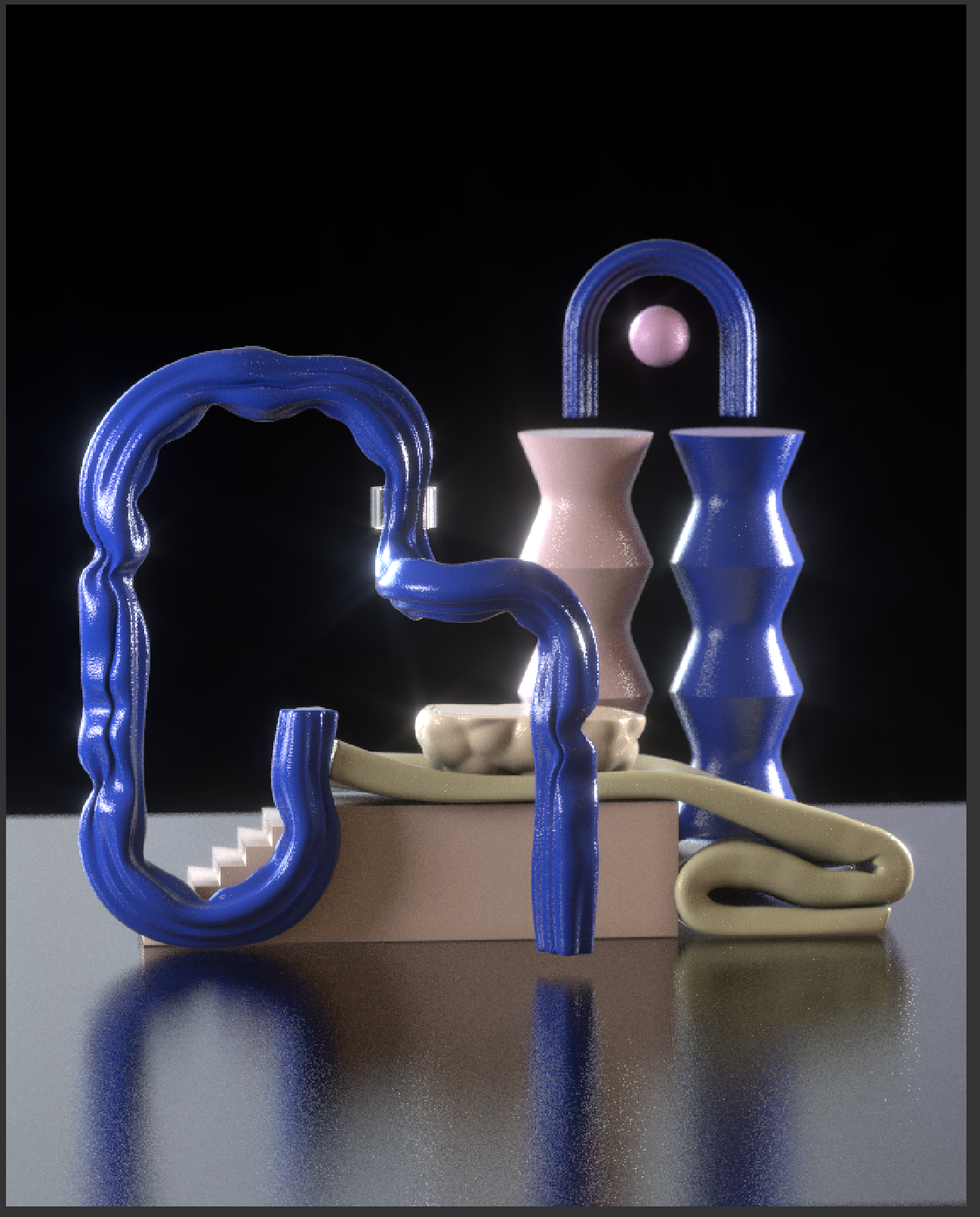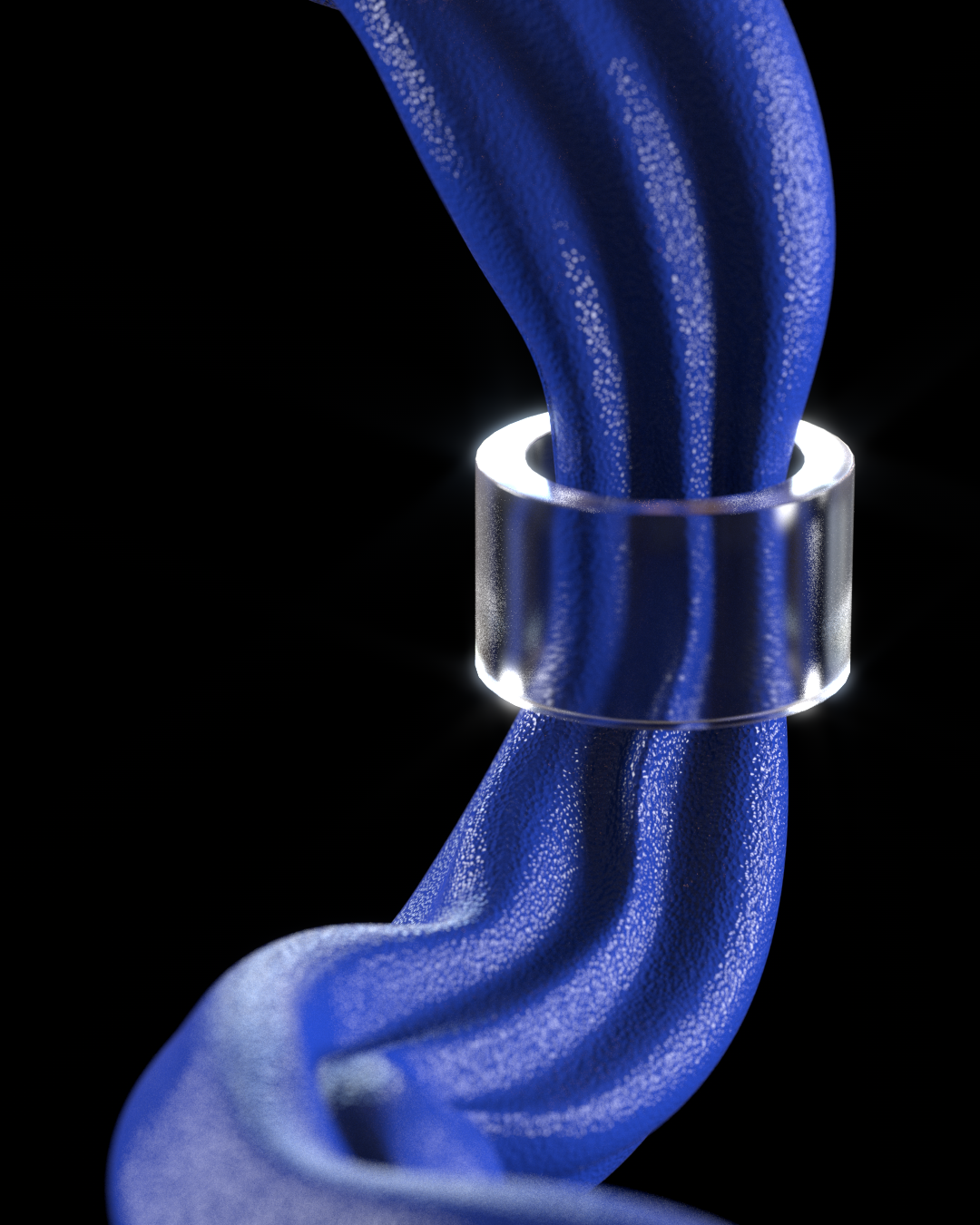MA PROJECT DEVELOPMENT
Proposal
I will be researching interaction between the body and design objects through 3D visualisation, animation and fabrication techniques. Inspired by the ethos of the Vienna Secessions ‘gesamtkunstwerk’ I will investigate the potential for embodied experience with everyday design objects and interactive environments. I will create interactive virtual compositions that will be translated into functional design objects and installed space.
My project outcome will be initially guided by experimentation with 3D software to create digital compositions that reference geometry and biomorphism. These compositions will explore material, texture, light, form and space. Later iterations will consider these elements in relation to the body through being fabricated into conceptual furniture designs using 3D printing techniques and casting. This production process will evaluate sustainable materials, methods of production and haptics.
-
Profile
I am an interdsiciplinary artist, designer and DJ based in Aberdeen. As a graduate artist I have curated, planned and delivered exhibitions. My most recent shows including Royal Scottish Academy, New Contemporaries and the Scottish Society of Artists.
My creative practice combines digital media, sculpture and sound in an installed space. I translate sound and digital image into physical space to create mindfulness and a bodily awareness for participants.
-
Email
CV
Instagram
Vimeo
Soundcloud
I will be researching interaction between the body and design objects through 3D visualisation, animation and fabrication techniques. Inspired by the ethos of the Vienna Secessions ‘gesamtkunstwerk’ I will investigate the potential for embodied experience with everyday design objects and interactive environments. I will create interactive virtual compositions that will be translated into functional design objects and installed space.
My project outcome will be initially guided by experimentation with 3D software to create digital compositions that reference geometry and biomorphism. These compositions will explore material, texture, light, form and space. Later iterations will consider these elements in relation to the body through being fabricated into conceptual furniture designs using 3D printing techniques and casting. This production process will evaluate sustainable materials, methods of production and haptics.
-
Profile
I am an interdsiciplinary artist, designer and DJ based in Aberdeen. As a graduate artist I have curated, planned and delivered exhibitions. My most recent shows including Royal Scottish Academy, New Contemporaries and the Scottish Society of Artists.
My creative practice combines digital media, sculpture and sound in an installed space. I translate sound and digital image into physical space to create mindfulness and a bodily awareness for participants.
-
CV
Vimeo
Soundcloud
SEMESTER 1
RESEARCH
Designers + Reading
Interior design + Mixed media sculpture + Ceramic + 3D printing
Interior design + Mixed media sculpture + Ceramic + 3D printing
These designers all experiment with form and in some cases with methods of manifacturing. I am interested in these works both aesthetically and structurally. Artists Wang & Soderstrom utilise 3D software and printing to conceptualise and fabricate their design objects. They also use 3D space to animate their designs, this combination of parralel digital and physical manifestations is a theme I will be exploring within my own work.
1. Steve Bukowski
2. Kristen Wentrcek & Andrew Zebulon
3. Jurgen Bay
4. Chris Schanck
5. James Shaw
6. Wang & Soderstrom
7. Bari Zipperstein
8. Aubrey Large
9. Phillippe Starck
1. Steve Bukowski
2. Kristen Wentrcek & Andrew Zebulon
3. Jurgen Bay
4. Chris Schanck
5. James Shaw
6. Wang & Soderstrom
7. Bari Zipperstein
8. Aubrey Large
9. Phillippe Starck
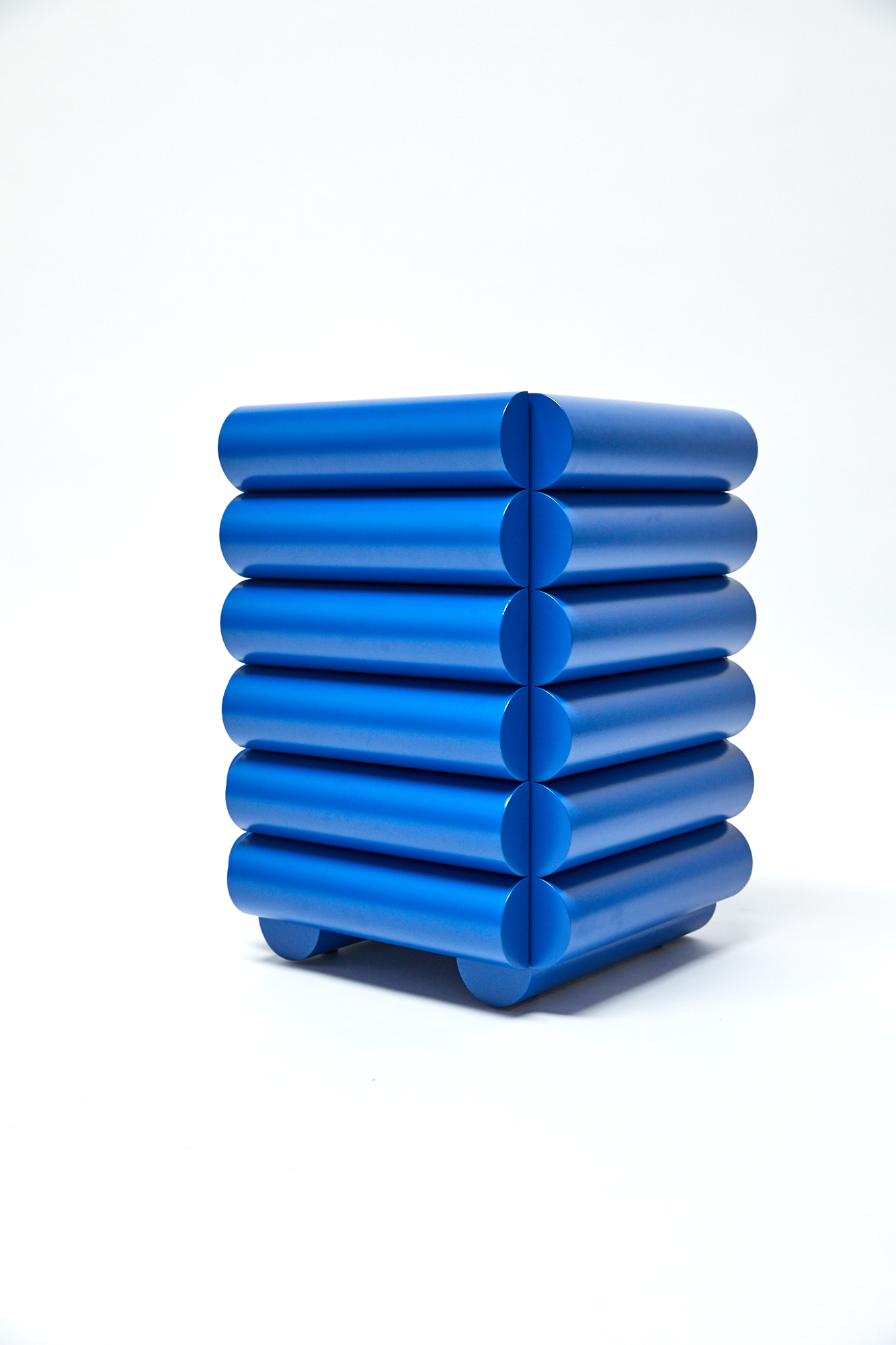
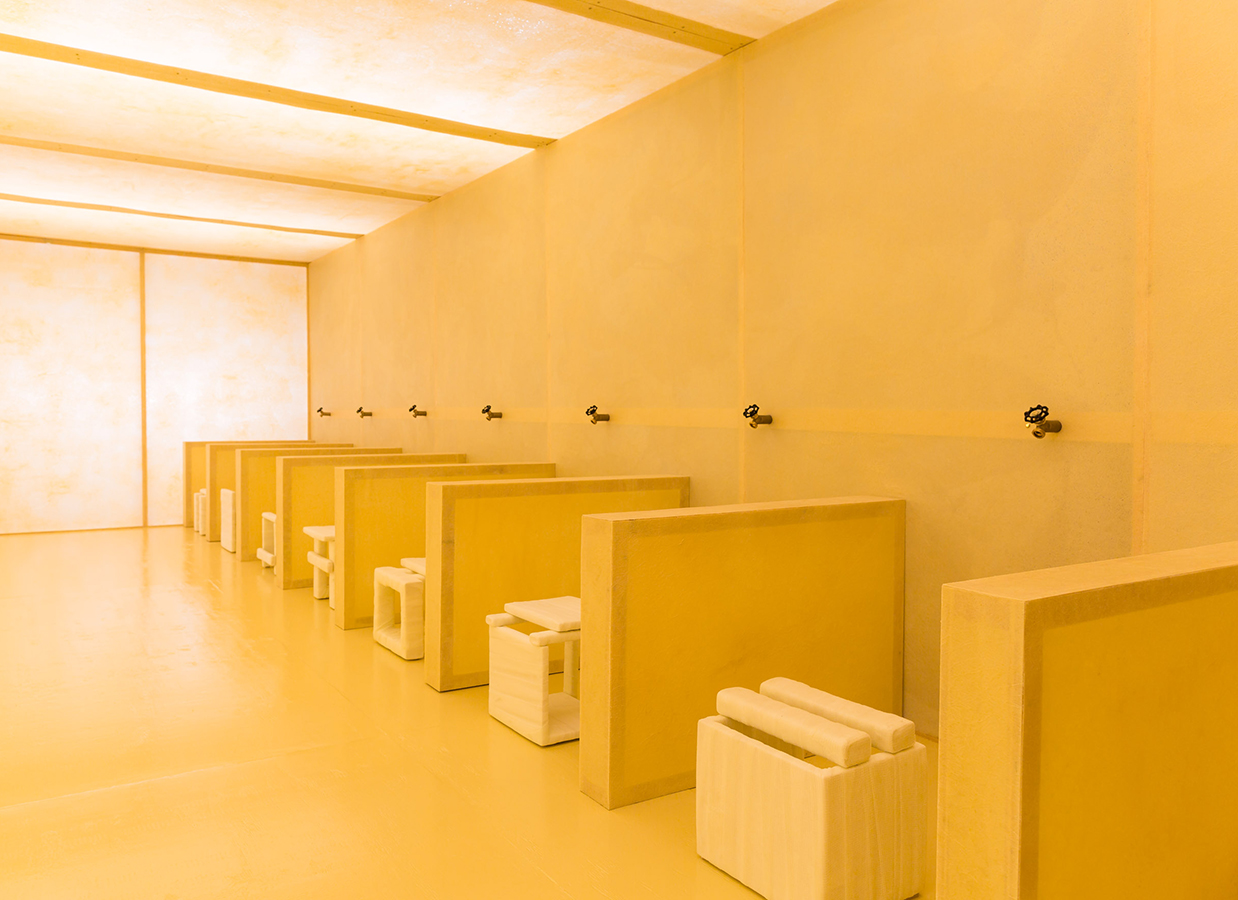

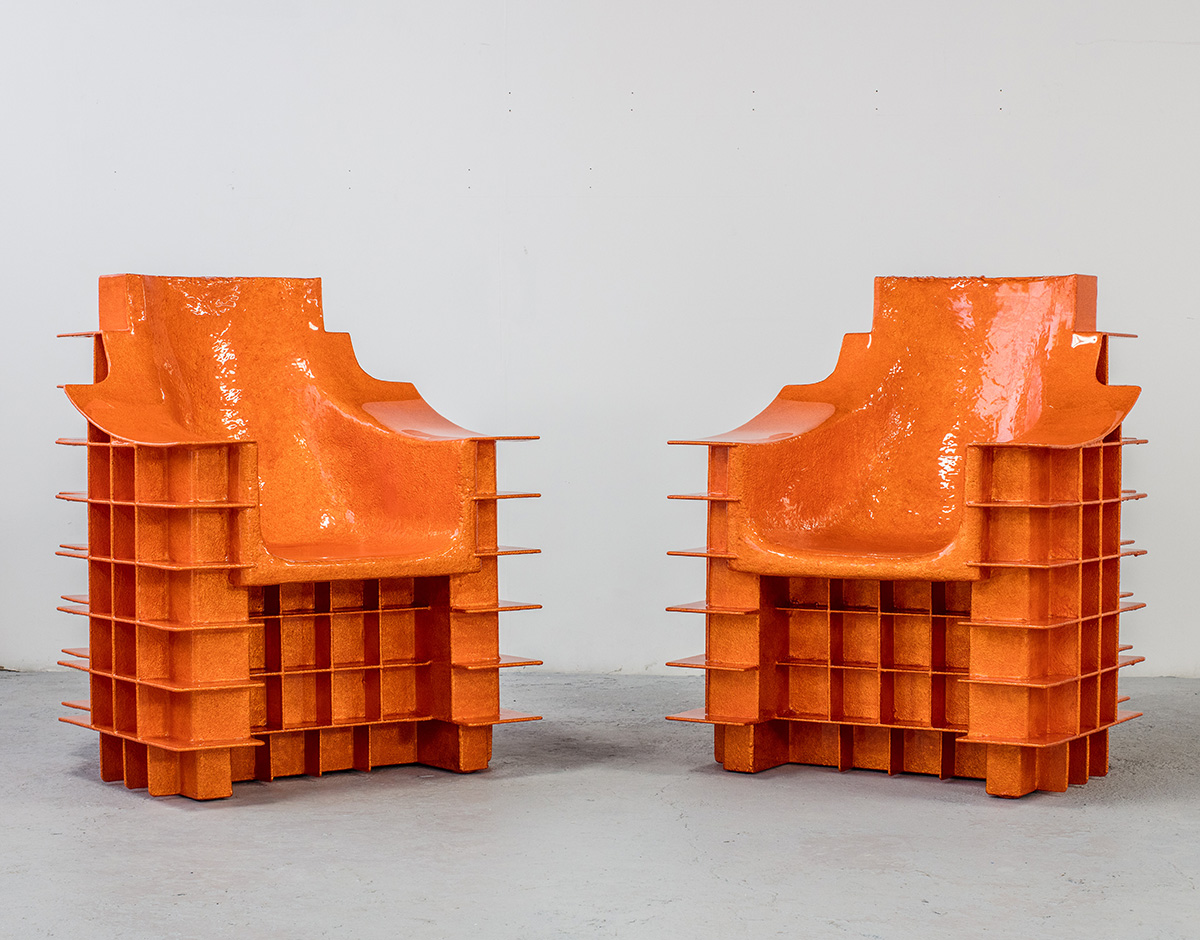





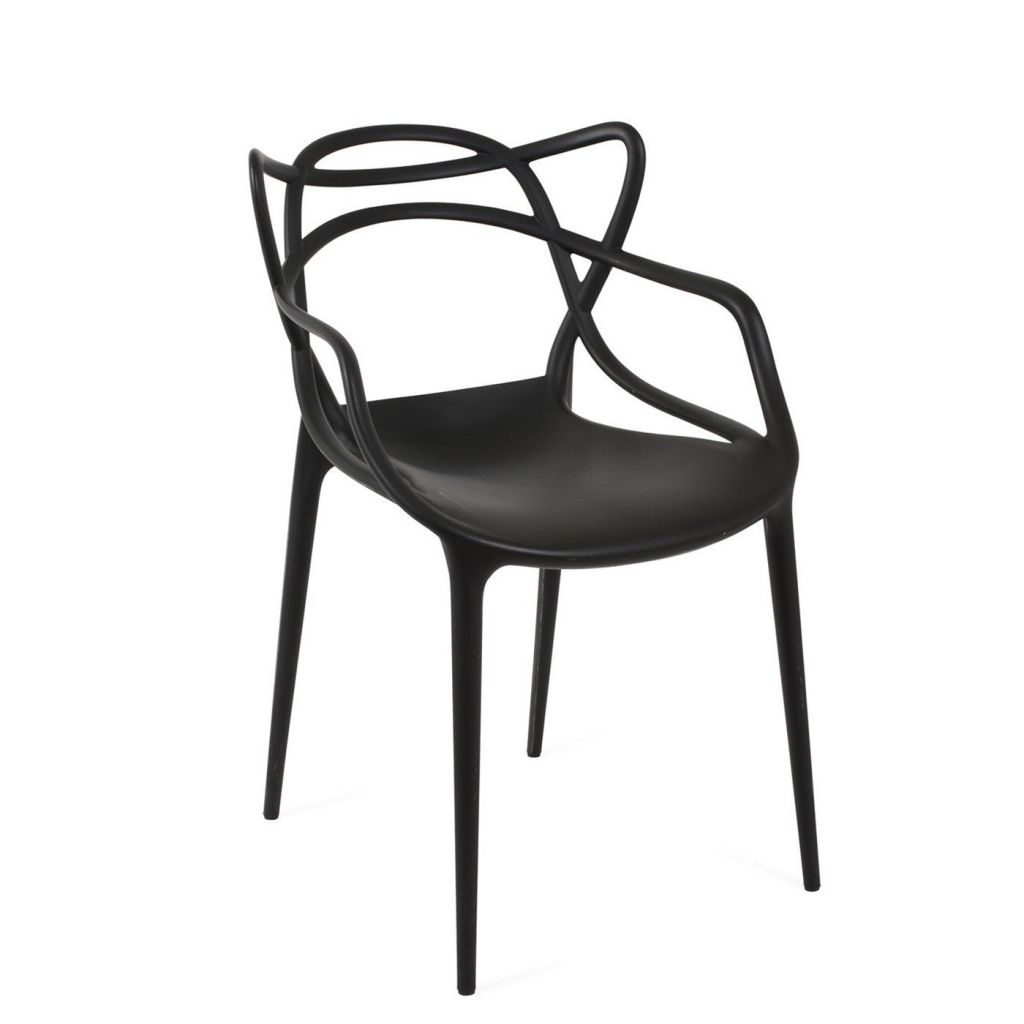
I have started researching design principles and history as a basis to enrich my working process and wider understanding as a designer. Through reading I have learned more about 20th century design movements and their ramifications. Ideas such as Process Led Design tie well into 3D visualisation and manufacturing, it incorporates the parameters of digital software into the design. Designers such as Mathias Bengtsson have incorporated this style through their focus on technology. Using mathematical procedures of automated growth he creates otherly furniture objects. These designs are only made possible by their particular production methods. Aesthetic purity and geometric principles have appeared well before the emergence of digital making methods and can be found in early design movements, Arne Jacobsons coffee set being an example of this.
I have also been looking at designers who incorporate sensory stimulus. Verner Panton’s Visiona 2 (1970) was an installed interior space that took advantage of olfactory and auditory senses. In my own work I want to elicit sensory experience through sound and touch.
Italian Postmodern architect Ettore Sottsass creates interior objects and spaces that comprise of basic geometric shapes and bright colours. I am drawn to his consistent visual style and ability to apply this to numerous design objects and a multitude of scales, chairs, kettles, totems. His work blurs somewhere between furniture and sculpture.
1. Verner Panton
2 - 3. Ronan Bouroullec
4 - 5. Mathias Bengtsson
6 - 8. Ettore Sottsass
9. Arne Jacobson
I have also been looking at designers who incorporate sensory stimulus. Verner Panton’s Visiona 2 (1970) was an installed interior space that took advantage of olfactory and auditory senses. In my own work I want to elicit sensory experience through sound and touch.
Italian Postmodern architect Ettore Sottsass creates interior objects and spaces that comprise of basic geometric shapes and bright colours. I am drawn to his consistent visual style and ability to apply this to numerous design objects and a multitude of scales, chairs, kettles, totems. His work blurs somewhere between furniture and sculpture.
1. Verner Panton
2 - 3. Ronan Bouroullec
4 - 5. Mathias Bengtsson
6 - 8. Ettore Sottsass
9. Arne Jacobson
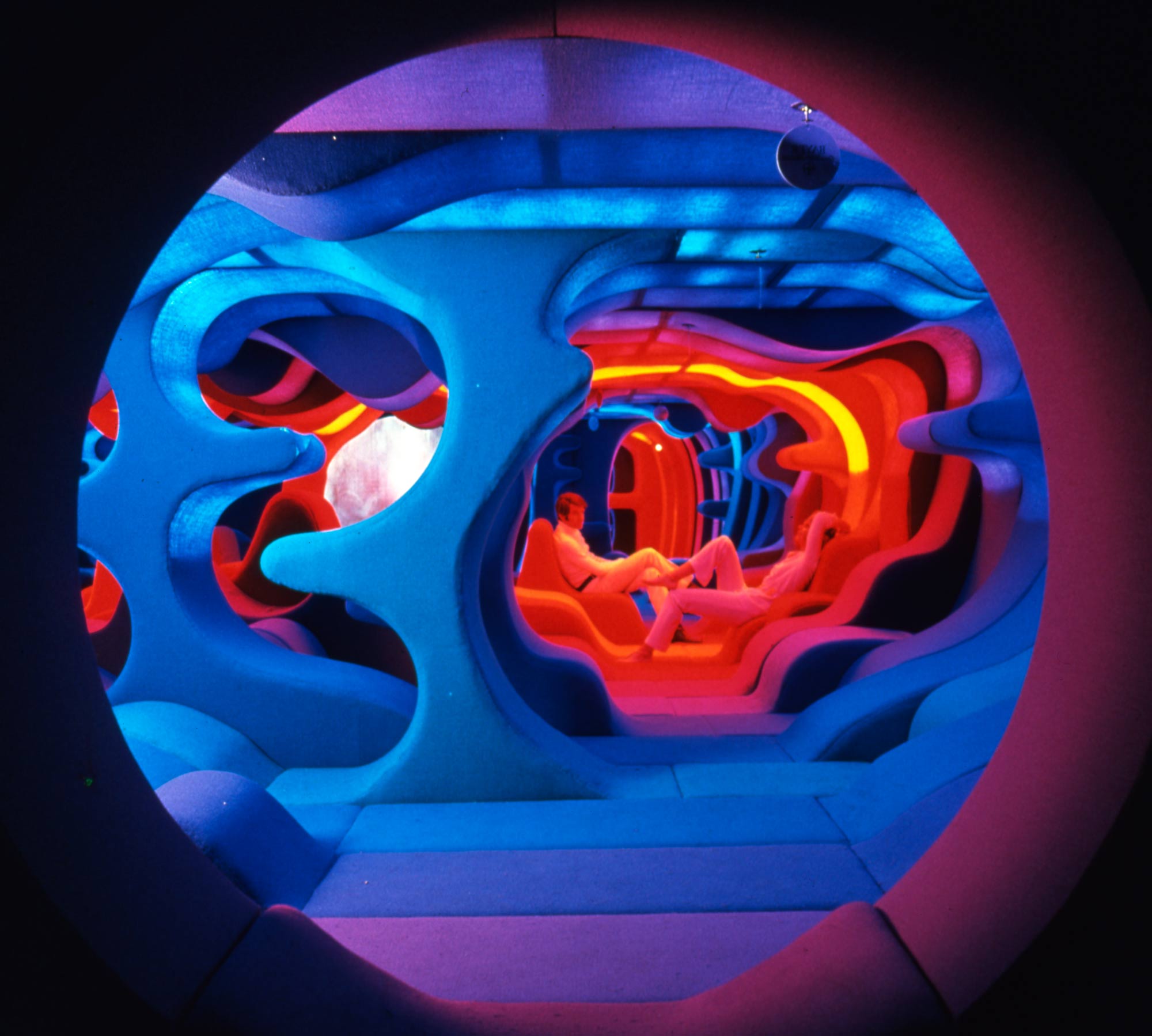


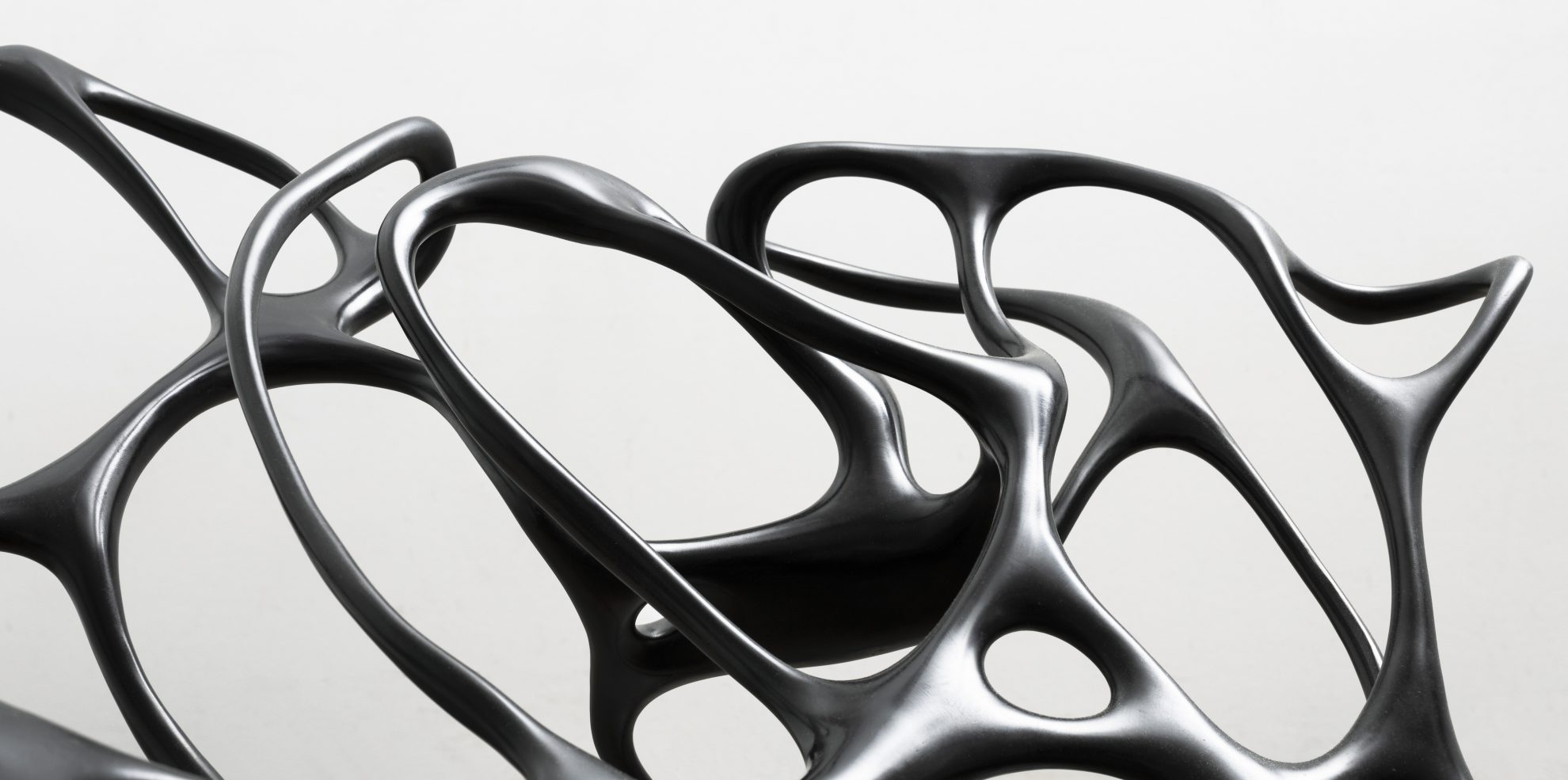





DEVELOPMENT
Shape Concepts
3D modelling + Animation
3D modelling + Animation
These objects were created through sweeping primitive shapes along a path or spline. This vessel combines geometric form and organic movement. These compositions will be part of an initial investigation of possible forms that will influence further design outcomes later on in my project development.
These compostions were created using 3D software Cinema 4D and rendering engine Octane Render.
These compostions were created using 3D software Cinema 4D and rendering engine Octane Render.
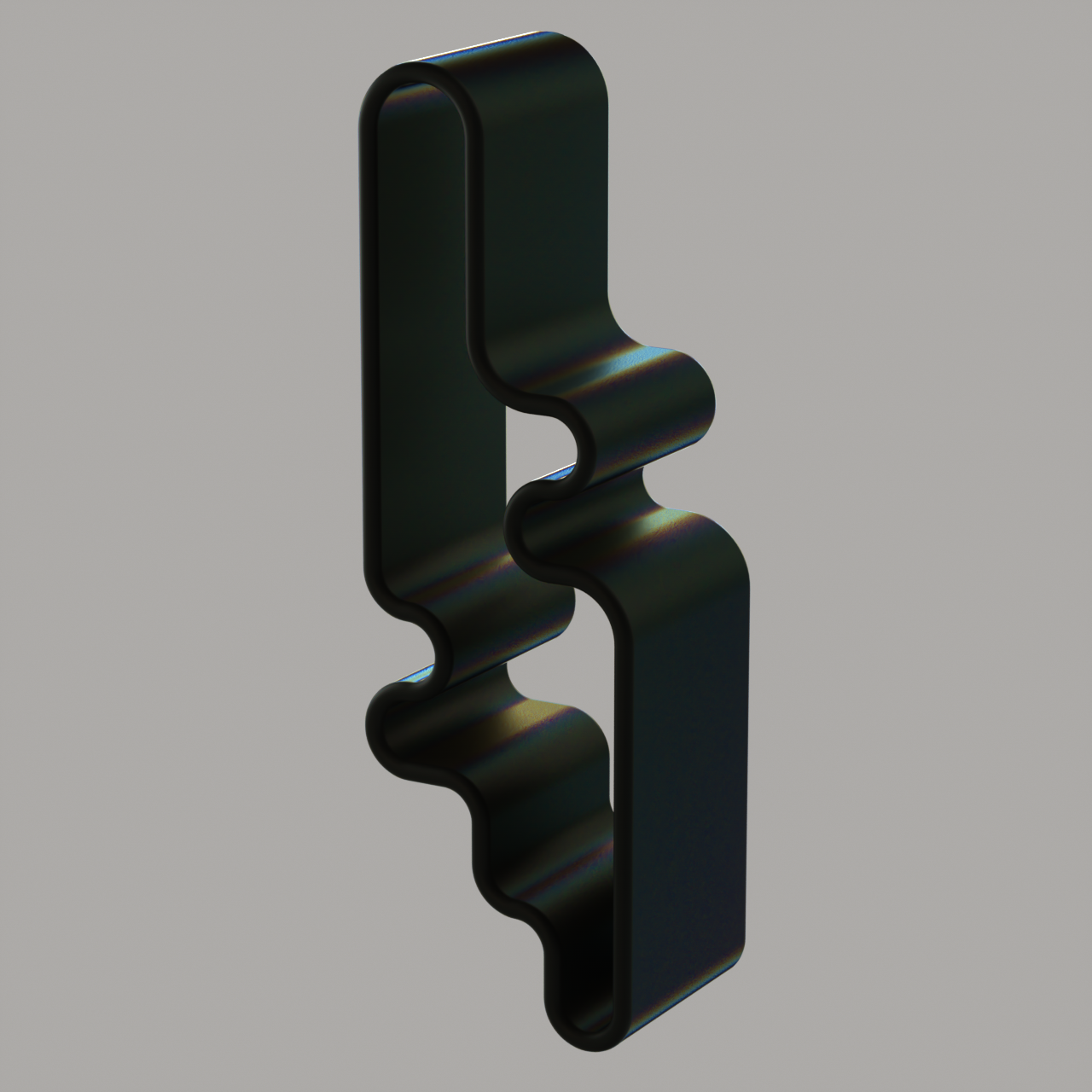
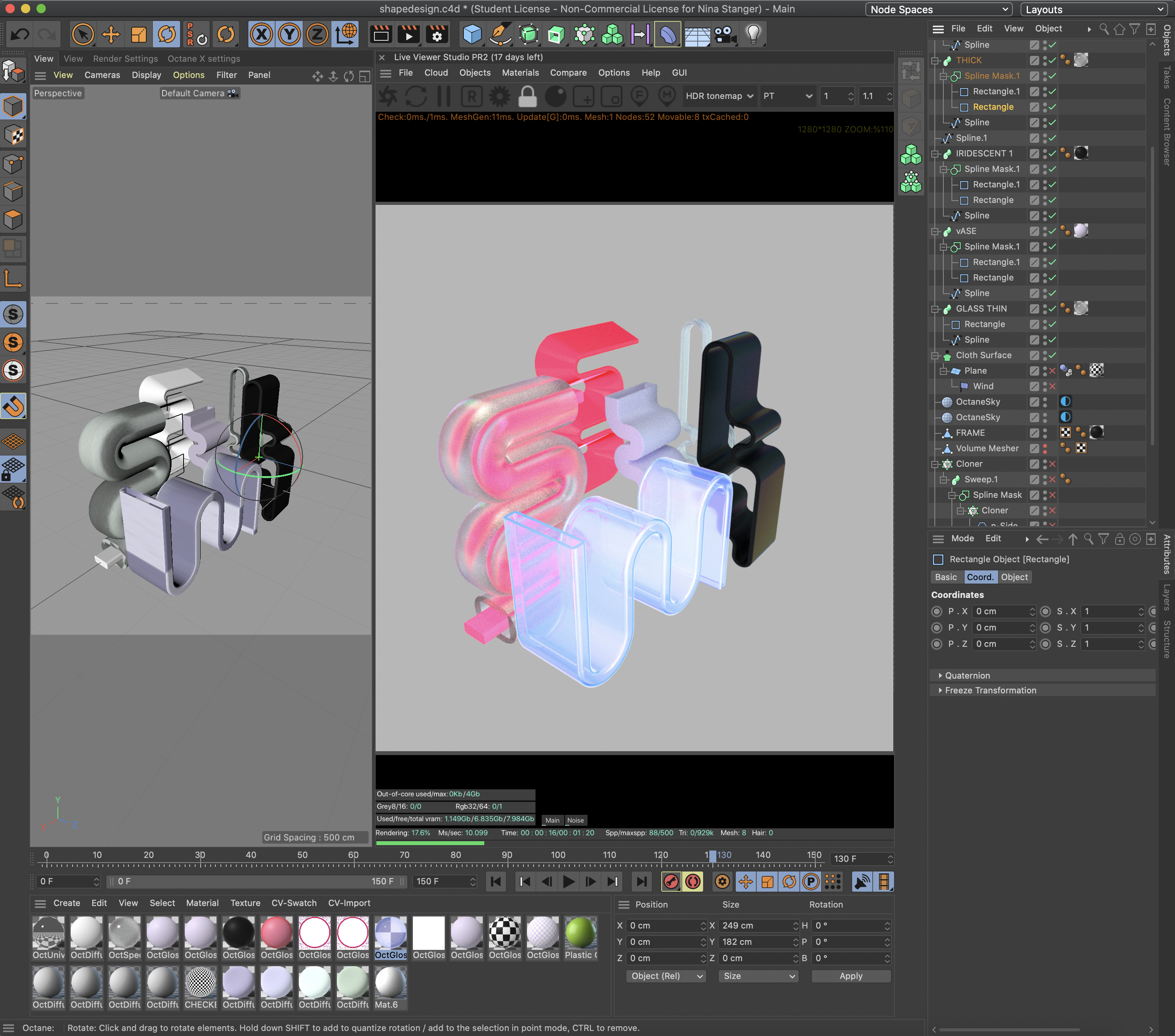

SEMESTER 2
RESEARCH
Designers + Reading
Motion Design + Graphic Design + Text
Motion Design + Graphic Design + Text
I have been researching designers and studios that
work with motion graphics and coding on public projects. One studio in
particular that I have found really interesting is, Dutch design company,
Studio Dumbar. Their projects are often using generative computation and
animation in a way that invites interactions and discusses digitisation. The
two projects I have cited by them are Cumulus Park and Demo. Cumulus Park is a
innovation hub located in Amsterdam, that gives spaces and networking opportunities
to individuals and organisations at all levels, its focus is on digital
innovation and urbanisation. Studio Dumbar created their identity, which used
code to create text made up of small modules that form into new words when
navigating their space. This identity reflects an ethos of flexibility and
collaboration in a digital context. Demo festival was organised by Studio
Dumbar, this festival features the work of 80 motion artists and places them
throughout Amsterdam, utilising public spaces and screens normally used for
commercial advertising. I think artists and designers being able to find ways
of occupying new spaces is needed to engage an increasingly disengaged public.
I have been reading The Human Use of Human Beings by Norbert Weiner, written in the sixties, this book is about changes to society brought on by technology. It theorises a parallel between algorithms and naturally occurring structures of nature, he balances positive and negative critique of this situation. Much of what he writes continues to be increasingly relevant as the acceleration of technology only hastens.
In one passage he writes “What many of us fail to realise is that the last four hundred years are a highly special period in the history of the word. The place in which changes during these years have taken place is unexampled in earlier history, as is the very nature of these changes, this is partly the result of increased communication but also of an increased mastery over nature, which, on a limited planet like earth, may prove in the long run to be an increased slavery to nature. For the more we get out of the world the less we leave, and in the long run we shall have to pay our debts at a time that may be very inconvenient for our own survival. We are the slaves of our technical improvement and we can no more return a New Hampshire farm to the self-contained state in which it was maintained in 1800 than we can, by taking thought, add a cubit to out stature or, what is more to the point, diminish it. We have modified our environment so radically that we must modify ourselves in order to exist in this new environment. We can no longer live in the old one. Progress imposes not only new possibilities for the future but new restrictions. It seems almost as if progress itself and our fight against the increase of entropy intrinsically must end in a downhill path from which we are trying to escape.”
I particularly enjoyed this passage as I felt it resonated many of them themes, I am exploring within my own work, particularly, the degree to which humans are modified by the objects they create and the interaction it imposes.
I have also been reading Speculative Everything by Dunne and Raby, and Why Materials Matter by Seetal Solanki. Both of these books highlight the ethical and ideological possibilities for design in practical application. Why materials Matter is specifically focused on materials and production. One of the designers included is James Shaw, who uses waste plastic product as his primary material. He created his own extrusion gun to build surfaces and structures with his melted recycled plastics. He applies this technique to both functional objects and more conceptual pieces.
1. - 2. Studio Dumbar - Cumulus Park
2. - 3. Studio Dumbar - Demo Festival
4. The Human Use of Human Beings, Norbert Weiner
5. Why Materials Matter, Seetal Solanki (page cites designer James Shaw)
I have been reading The Human Use of Human Beings by Norbert Weiner, written in the sixties, this book is about changes to society brought on by technology. It theorises a parallel between algorithms and naturally occurring structures of nature, he balances positive and negative critique of this situation. Much of what he writes continues to be increasingly relevant as the acceleration of technology only hastens.
In one passage he writes “What many of us fail to realise is that the last four hundred years are a highly special period in the history of the word. The place in which changes during these years have taken place is unexampled in earlier history, as is the very nature of these changes, this is partly the result of increased communication but also of an increased mastery over nature, which, on a limited planet like earth, may prove in the long run to be an increased slavery to nature. For the more we get out of the world the less we leave, and in the long run we shall have to pay our debts at a time that may be very inconvenient for our own survival. We are the slaves of our technical improvement and we can no more return a New Hampshire farm to the self-contained state in which it was maintained in 1800 than we can, by taking thought, add a cubit to out stature or, what is more to the point, diminish it. We have modified our environment so radically that we must modify ourselves in order to exist in this new environment. We can no longer live in the old one. Progress imposes not only new possibilities for the future but new restrictions. It seems almost as if progress itself and our fight against the increase of entropy intrinsically must end in a downhill path from which we are trying to escape.”
I particularly enjoyed this passage as I felt it resonated many of them themes, I am exploring within my own work, particularly, the degree to which humans are modified by the objects they create and the interaction it imposes.
I have also been reading Speculative Everything by Dunne and Raby, and Why Materials Matter by Seetal Solanki. Both of these books highlight the ethical and ideological possibilities for design in practical application. Why materials Matter is specifically focused on materials and production. One of the designers included is James Shaw, who uses waste plastic product as his primary material. He created his own extrusion gun to build surfaces and structures with his melted recycled plastics. He applies this technique to both functional objects and more conceptual pieces.
1. - 2. Studio Dumbar - Cumulus Park
2. - 3. Studio Dumbar - Demo Festival
4. The Human Use of Human Beings, Norbert Weiner
5. Why Materials Matter, Seetal Solanki (page cites designer James Shaw)




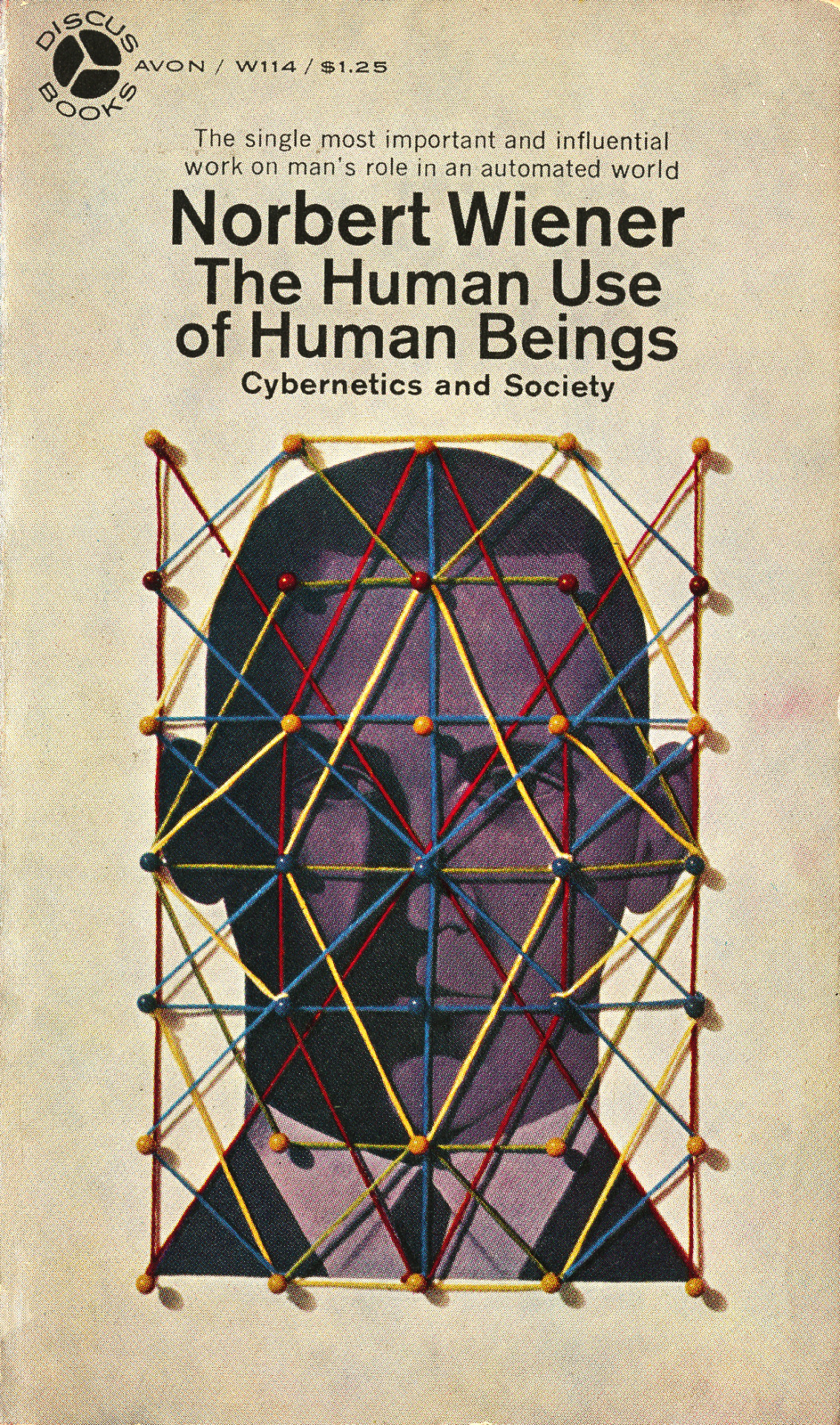

DEVELOPMENT
Shape Concepts
3D modelling + Animation
3D modelling + Animation
During this second semester I have focused
on increasing my knowledge and ability within 3D modelling. Building a greater
understanding of topology is what will enable me to create more complex forms
but more crucially, it allows for more fluid and organically moving geometry.
Quad Topology is generally used by 3d animators but is an essential practice to
character animators, neat topology mean models that more accurately mimic real bodily
movement. I have utilised topology in conjunction with Cinema 4D’s simulated
physics to create models that move between being hard surfaced to soft and pliable.
I am interested in this specific kind of mimicry, where the digital and
immaterial become increasingly less discernible from traditionally organic
qualities.
I plan on freezing these models in motion as they undulate and 3D printing them. I am also considering using character rigging to experiment with ways in which I can imbue these objects with other modes of movement. Character rigs act as an internal skeleton for the 3D model to base its movement, they are most often used for anthropomorphic characters rather than objects. Using my research from these models I will begin to conceptualise functional design objects.
I plan on freezing these models in motion as they undulate and 3D printing them. I am also considering using character rigging to experiment with ways in which I can imbue these objects with other modes of movement. Character rigs act as an internal skeleton for the 3D model to base its movement, they are most often used for anthropomorphic characters rather than objects. Using my research from these models I will begin to conceptualise functional design objects.


